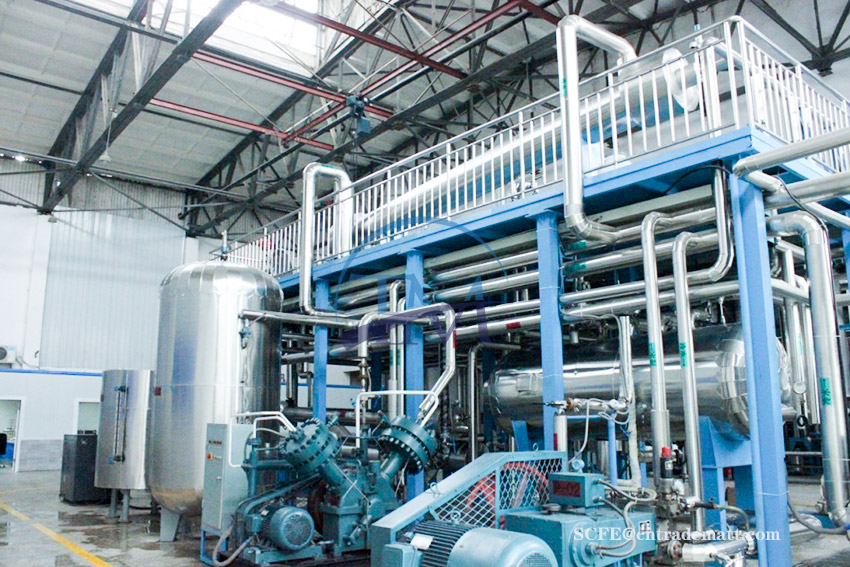In chemical analysis, the general requirement of analytical instruments is the state of solution, so extracting the substances to be measured from solid and semi-solid into solution is a process that almost all methods will encounter. In fact, in our daily life, the extraction process occurs all the time, such as making tea, boiling chicken soup is a process of extraction. Today’s popular science lecture will talk with you about several common extraction methods.
Soxhlet extraction
Soxhlet extraction is a classical extraction method, which is still widely used in many laboratories for the detection of organic compounds. The United States Environmental Protection Agency (EPA) used it as one of the standard methods for extracting organic matter (EPA3540C); the national standard method also used the Soxhlet extraction method as the extraction method. The main advantage of Soxhlet extraction is that it does not need special instruments and equipment, and the operation method is simple and easy, many laboratories can be realized, and the use cost is low. The main drawbacks of Soxhlet extraction are large solvent consumption and long time consumption.
Ultrasound extraction
Ultrasound extraction generally uses ultrasonic cleaner to extract, but also has a special probe extractor. Ultrasound extraction has the advantages of no heating, simple operation, time saving and high extraction efficiency. It is also recommended in the standard of soil extraction.
Microwave extraction
Microwave extraction system uses energy minimization technology, which effectively prevents the decomposition of extracts and improves the extraction recovery and reuse. It has been widely used in soil analysis, chemical industry, food, spices, Chinese herbal medicine and cosmetics. There are two main types of microwave extraction. One is the open type, the other is the high-pressure closed type. The advantage of open microwave extraction system is that it can prepare large sample size and add extraction reagents at any time. The disadvantage of open microwave extraction system is that the solvent consumption is large and volatile components may be lost in the sample preparation process. Only one or several samples are prepared at a time. The extraction time is relatively long and the extraction temperature is not easy to control. High-pressure sealed microwave extraction, high temperature and high pressure make the target extracts and samples. The valence bonds between the substrates are broken and the solvent is forced to enter the sample or the target extract is brought to the outside of the sample by the vapor formed by the polar components in the sample, which promotes the full contact between the solvent and the target extract. The advantage of this system is that the extraction conditions can be controlled. Generally, several to dozens of samples can be prepared at a time. Because there is no intense chemical reaction, the sample size can be in the range of 0.5g to 10g. The volatile components and extraction reagents are not lost in the sample preparation process, and the extraction time is short.
Supercritical fluid extraction
Supercritical Fluid Extraction (SFE) is a technology that extracts and separates some components from liquid or solid by using supercritical gas as extractant. Gases under supercritical conditions, also known as supercritical fluids (SF), are substances existing in the form of fluids above the critical temperature (Tc) and pressure (Pc). Usually there are carbon dioxide (CO2), nitrogen (N2) and so on. Supercritical fluid extraction (SFE) has the advantages of short time-consuming and less organic solvents, so it is widely used in the pretreatment of pesticide residue analysis samples, especially in the extraction of natural medicinal ingredients such as food and Chinese herbal medicine. The disadvantage is that the equipment and process requirements are high, and the one-time investment is relatively large.

Homogeneous extraction (homogenization)
Homogeneous extraction method (homogenization method), generally for plant samples, food, especially fresh samples with high water content, such as vegetables, fruits, etc., is more convenient and simple to use. A homogenizer will do. Straight white point said that the homogenate extraction process is equivalent to the process of our home soybean milk. The homogenate extraction process is used in the initial sample preparation stage of almost all plant or animal samples. According to the different properties of matrix and target substance, polar solvent is the most commonly used extraction solvent, and acetonitrile is the most used standard method.
Rapid solvent extraction
In recent years, rapid solvent extraction technology has been widely used. It uses the form of high temperature and high pressure to extract. In terms of time, the traditional extraction time of more than ten or even twenty hours is shortened to 20-30 minutes, and the amount of solvent used is also reduced from several hundred milliliters to more than ten or even several milliliters. And because of the automatic instrument control, the extraction conditions of each sample are exactly the same, so the parallelism has been greatly improved. At present, some automated products on the market not only have two-channel pressure solvent extraction, but also can realize the whole process of extraction-quantitative concentration-on-line solid phase extraction. The automation degree is very high, which can improve the efficiency of the laboratory. Recent “Ten Articles of Soil” have corresponding standards for the pretreatment of organic pollutants in soil, such as HJ783, 743 and so on.
Tags: Soxhlet extraction,Ultrasound extraction,Microwave extraction,Supercritical fluid extraction,Homogeneous extraction,Rapid solvent extraction